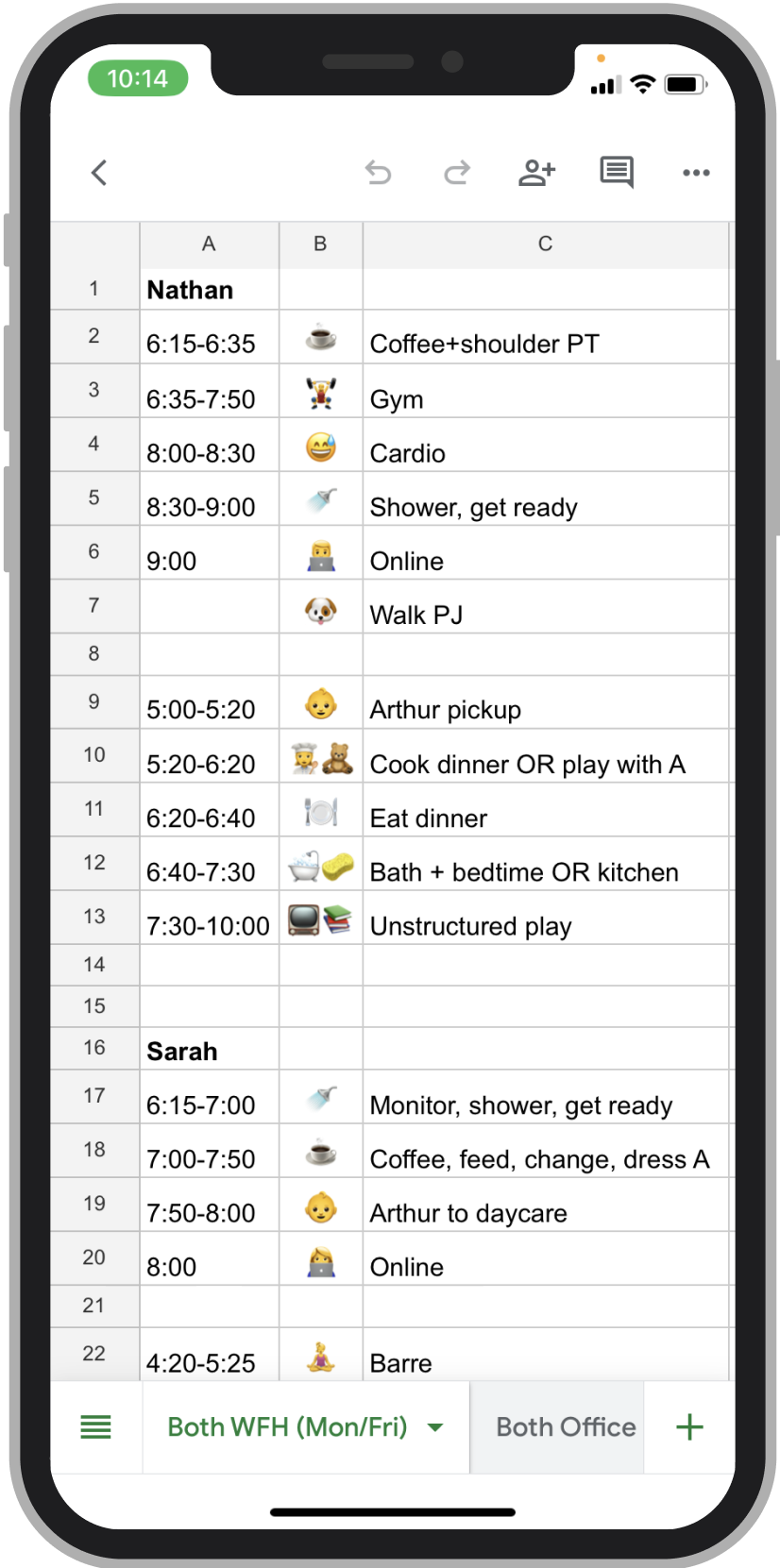See how our services
make an impact.
Design Thinking 🤝 Daily Routine
Using the 7 Steps of Design Thinking to Streamline Your Schedule
When my son, Arthur, started daycare this summer, my husband, Nathan, and I were essentially winging any sort of daily schedule or routine. Every single day we would wake up and try to figure out who was in charge of what that day.
Who’s doing daycare drop off? And pick up? What’s your meeting schedule? Are you going into the office? Am I? Chaos, confusion, shambles.
Having clearly found an opportunity for improvement, I turned my work brain on and used design thinking to solve this problem. But first, an important aside: Design is frequently misunderstood as purely visual, but it’s actually much more than that.
Design at its core is problem solving. It requires an understanding of user behavior, business goals and technical considerations, the visuals only come into play once a lot of hard work and deep thinking are complete.
Sarah Pigott, Senior UX Designer at Tonic
Now back to the daily schedule problem and how I applied the 7 steps of design thinking to create a routine.
1. Identify the problem
We needed a routine. Yesterday. Because we have so many different weekday schedule constraints, not having one created several problems.
- Confusion around responsibilities and timing
- Both Nathan and I feeling the weight of responsibility for every task
- Decision fatigue, guesswork, and a heavy mental load
2. Research it in-depth
I started with information gathering for each of our schedules. Documenting the bus schedule, my exercise class times, and all of our morning tasks and how long they take. Just like when solving a software design problem, it’s essential to know all of your inputs and constraints before you can reach a solution.

3. Ideate possible solutions
Using a trusty spreadsheet, I began to map out many possible schedules based on the tasks and timing gathered in step 2, our daycare’s hours, and the reality of sharing a car. It was a lot of trial and error, or what designers call iterations.

4. Evaluate and select a promising solution
Nathan and I looked at schedule options together and discussed what worked best for us both. He prefers morning workouts and I prefer afternoon/evening. We also wanted the division of responsibilities to feel equitable. This helped us narrow things down to the daily schedules we’d put to the test.

5. Create a prototype
I thought about the best way to reference the daily routine (print out schedules on the fridge? Input all of this into a scheduling app?) and landed on the flexibility and simplicity of formatting our schedule spreadsheet so that it was readable on mobile. I improved the text hierarchy and added emojis to make it more scannable.

6. Test and troubleshoot
We started implementing our new routine and noticed a few issues along the way. There was the time I headed out to the car for daycare drop off, only to realize Nathan was still at the gym with the car.
7. Make improvements to and release the final product
A few hiccups in step 6 led to a few adjustments in step 7. We also learned that I prefer to make dinner (time to decompress) while Nathan prefers evening play with Arthur (time for connection and fun).
Overall this routine has solved many problems in our lives.
- The guesswork is removed from our daily lives
- We feel so much more settled and relaxed
- We’re working out regularly
- Our dog gets a good walk every day
- We’re splitting things equitably
Now what does any of this have to do with software? The same design thinking used in my life is almost certainly responsible for the technology, products, and spaces that you enjoy. If there’s an app or website that you genuinely like using, design thinking was involved. Plus a well-thought out design saves the development team time. Take it from one of Tonic’s very own engineers.
In my experience as an engineer, I have found that there is a direct relationship between the value that clients put on the design process and user satisfaction. The user in this context encompasses not just the end user who will ultimately interact with the website or app, but the product and engineering teams as well.
I feel that the importance of design is often downplayed or considered an afterthought when in reality designers are as much problem solvers as engineers and it's when the two specialties are given the opportunity to collaborate that user experience flourishes.
I absolutely love collaborating with designers as we tend to approach problems differently which in turn highlights each other's blind spots and allows us to solve problems more holistically. I have the utmost respect for designers – I definitely couldn't do what they do and I'm a better engineer for the ways they've encouraged me to ask questions, push boundaries and think outside the box!
Alex Hopkins, Senior Software Engineer at Tonic

Get in Touch
We'd love to see how we can make an impact for you. Let us know what you're working on.


